Fior di Latte ice cream
Looking for a new, fresh ice cream base? Fond of milk? – Look no further!
Many people tend to base their ice creams on vanilla, combining it with whatever other flavour they want to create. But there are other ice cream bases which serve a similar purpose – the Italian tradition offers Fior di Latte!
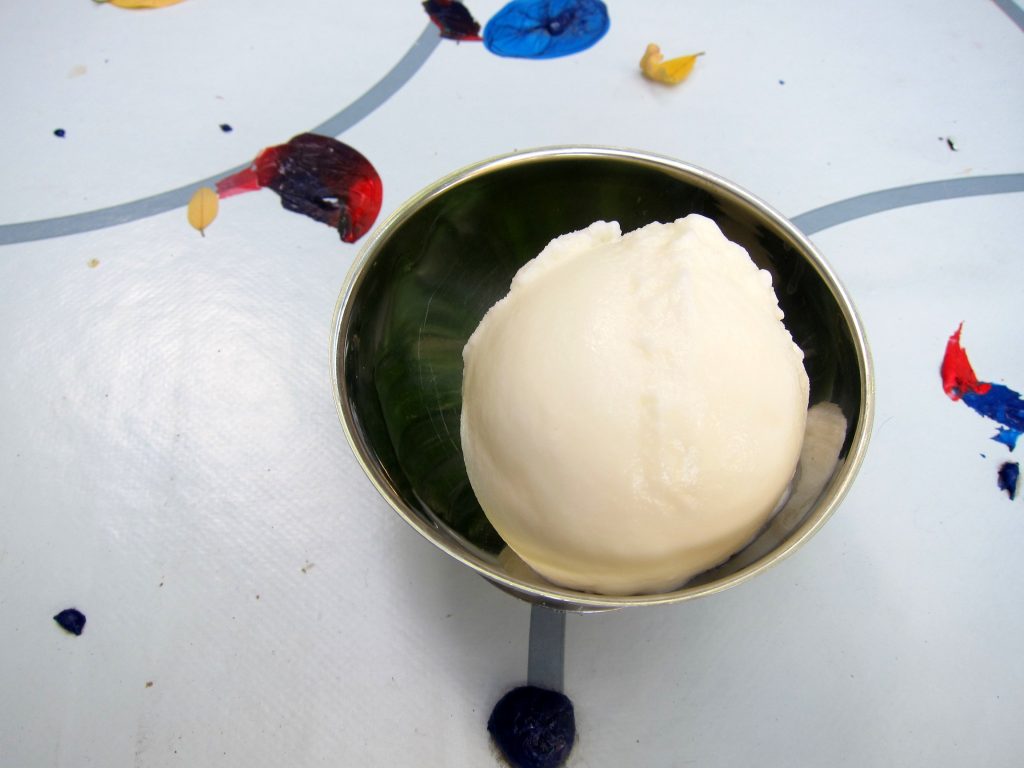
“Fior di latte” – literally ‘Flower of milk’, with the meaning ‘The best of milk’: a perfect canvas for a myriad of possible flavours!
Fior di Latte literally translates into “Flower of milk” which, I have been told, roughly means “The Best of milk”. Its name in French (“Fleur de lait“) means the same. I can hear some people yawning now – what point would there be in creating an ice cream which tastes of milk and little else?
Well – to start with, the sweetened, subtle flavour of milk is actually quite enjoyable in its own right.
Secondly, many people would mainly use Fior di Latte as the ’empty canvas’ for other creations: As milk is part of almost every other ice cream recipe, the Fior di Latte can easily be combined with about a zillion other flavours: a perfect and versatile ice cream-base, in other words.
Preserve the milk flavour: Use less cream, more milk
Fior di Latte should, in my view, really taste of milk – mild and rather “neutral”. Still, there are quite a few recipes out there which advocate the use of buffalo milk, unpasteurised milk, or other ‘creamier’ types of milk.
Myself, I did not grow up on a farm, was never given buffalo milk as a child, and I have never been much for creamy milk as a drink. In line with my personal preferences, I have therefore opted to mainly use “ordinary” whole milk (and much less cream than one normally would do in a traditional ice cream recipe). Your own experiences and preferences may differ, however, and if so, I encourage you to adapt the recipe accordingly!
But using less cream than usual comes at a prize: less cream also means less fat. Less fat means that the ice cream will be likely to freeze hard and unappetizing. We can’t have that, can we? Since we cannot rely on the fat of the cream for structure, we need to stabilize our ice cream in some other way. If we do not fancy the idea of turning to egg yolks (à la the traditional Italian and French traditions), we could try using different starches (like corn starch or arrowroot), or ingredients like Agar agar or gelatin.
Yours truly, however, wanted to try something new: Adventurously, I decided to try working with Gellan gum. Now, let me quickly acknowledge that strict ice cream purists, who reject anything else in their ice creams than dairy, sugar and eggs, may frown upon this. Well, I certainly lean towards the “natural ice cream” camp too, but I’m simply too curious to let that stop me from testing out things like Gellan 🙂
Gellan gum – stabiliser at work!
What does Gellan do? Like other ice cream stabilisers, its main purpose is to bind water. And it certainly does this very effectively: Even a small amount suffices to bring about effects that would require much larger quantities of egg yolks, fat molecules, starches, or Agar agar.
Gellan gum is a quite new invention. Actually derived from the fermentation of a bacteria, Gellan was first discovered/developed in a U.S laboratory towards the end of the 1970’s. First approved as a food additive in Japan 1988, it has since become regarded as a versatile and effective stabiliser, thickener and emulsifier. Nowadays, it is widely approved for use in food all over the world, often marketed as a vegan alternative to gelatin.
While the debate about the possible and alleged health hazards of food additives is likely to continue, Gellan gum seems to have come off quite well. The product appears to be not only “officially approved” but also widely considered as both safe and – coming from a bacteria – “more natural” than some other (industrial-grade) stabilisers out there. Ready to take the jump? Read on!
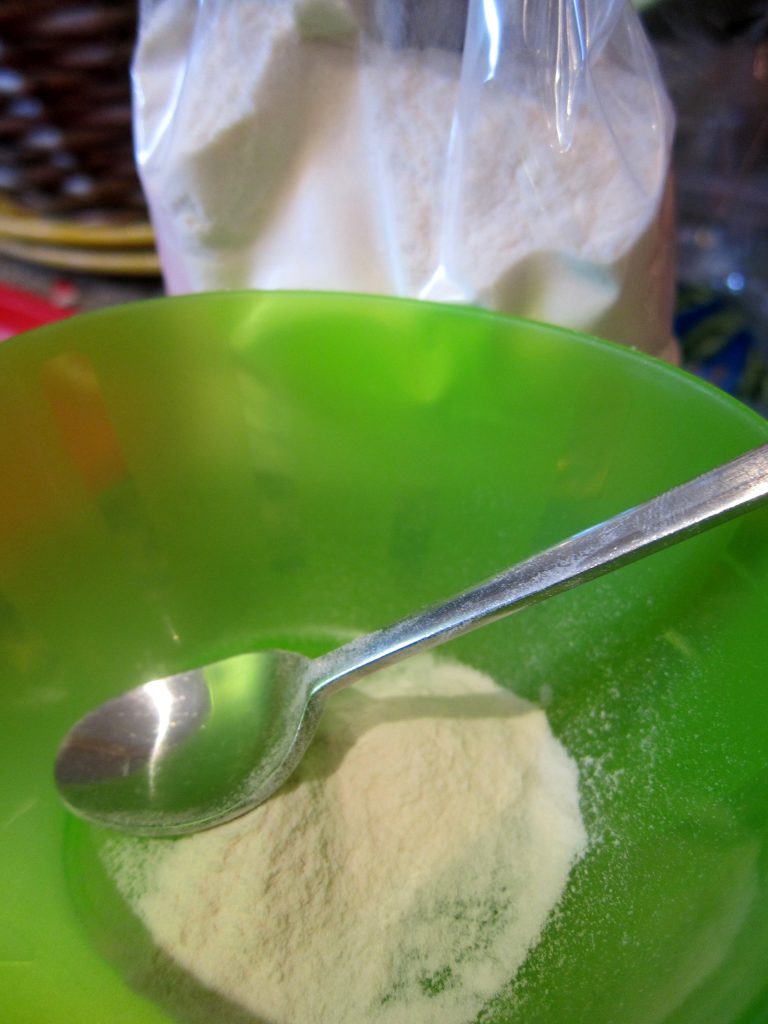
Gellan – a powerful stabiliser derived from bacteria (!). A tiny amount goes a very long way so be careful with the dosage! Within the European Union, Gellan gum carries the food additive code E418.
The preparations – easy and straightforward
Start by combining the dairy and most of the sugar in a saucepan. Save a little sugar in which to mix up the Gellan powder (thus further reducing the risks of gelatinous drops forming at the time of insertion).
In order to work properly, Gellan gum needs a temperature of 70° Celsius (158° F), so we will heat our milk/cream mix to that point.
When the temperature is right, add the Gellan gum (mixed up in a little sugar) and whisk until it has been well dispersed in the liquid.
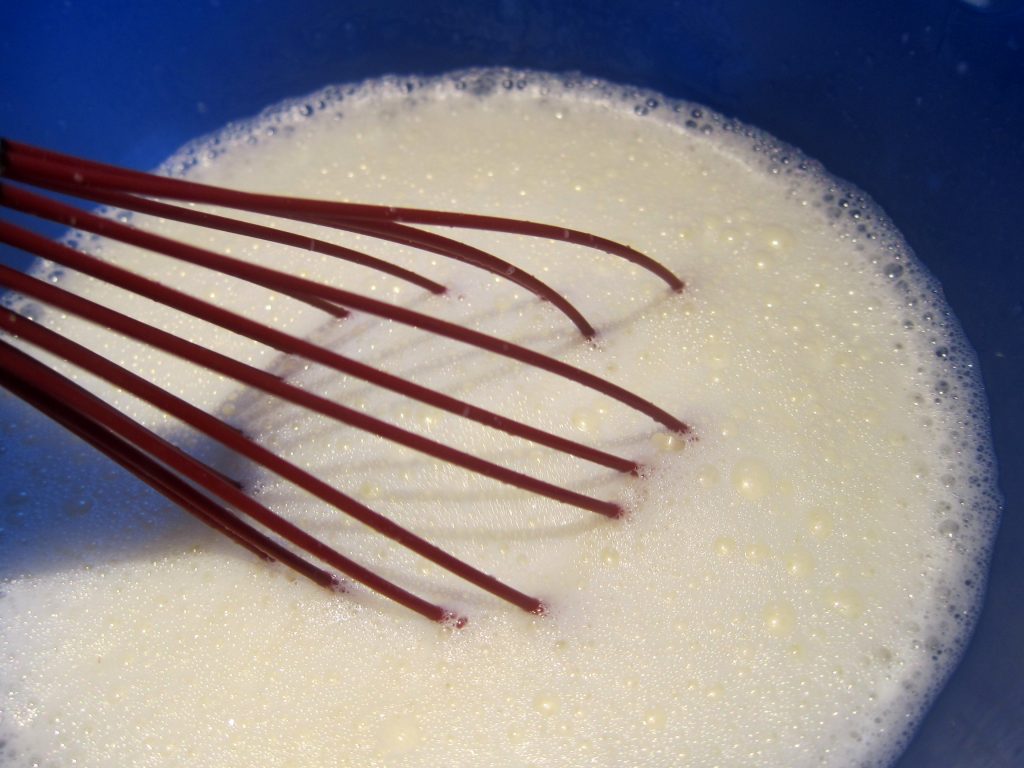
Mix the gellan with the sugar and whisk it all well when adding it to the milk: if not, you may end up with gelatinous droplets (not dangerous but makes for a less appetizing final result)
Let the Gellan gum work its stabilising magic for about five minutes or slightly longer: keep the temperature at, or slightly above, 70° Celsius (158° F).
Take off from the heat, let the ice cream base cool down and then, ultimately, chill for a couple of hours or so in the refrigerator. Now, churn the base in your ice cream machine or still-freeze, using your ordinary freezer.
Conclusion
Fior di Latte is a perfect ice cream base for all of us who would like to try something different for a “foundation”. The milk flavour is mild and pleasant in its own right, yet subtle enough to be easily combined with a plethora of possible other flavours. Thanks to the Gellan gum, this ice cream also ends up being relatively “slim”: most of the dairy is milk, and the proportions would not have been possible to pull off successfully without the use of a stabiliser.
As for preparations, they could hardly have been easier: mix all ingredients, let the Gellan gum activate for a handful of minutes at the required temperature, and then cool down/chill and churn the base! Could it be simpler?
Gellan gum as a stabiliser also turned out to be extremely effective: a small amount sufficed to ensure a pleasant structure with a very nice, smooth and inviting texture. These positives were also validated by the pleasant and soft mouthfeel. To my relief, I can also confirm that the Gellan gum did not leave any particular tang either: the overall flavour remained milk – pure and untainted.
- 600 ml (2½ cups) whole milk
- 100 ml (about 0.4 cup) cream
- 150 ml (about 0.6 cup) sugar
- ½ teaspoon Gellan gum (NOTE: don't overdose!)
- (optional) 1 tablespoon of inverted sugar (like Agave nectar)
- Set aside a small part of the sugar and mix that with the gellan powder.
- Pour the milk, the cream and the rest of the sugar in a saucepan and bring to about 70° Celsius (158° F).
- Add the Gellan gum (mixed with a little sugar, to ease the mix-in) and whish to promptly disperse it in the hot liquid.
- Keep the temperature at, or slightly above, 70° C (158° F). for at least five minutes, while whisking.
- Take the ice cream base off the heat and let cool down.
- Once cooled down, place the ice cream base in the freezer to chill.
- Churn in your ice cream machine, or still-freeze the ice cream using your ordinary freezer.
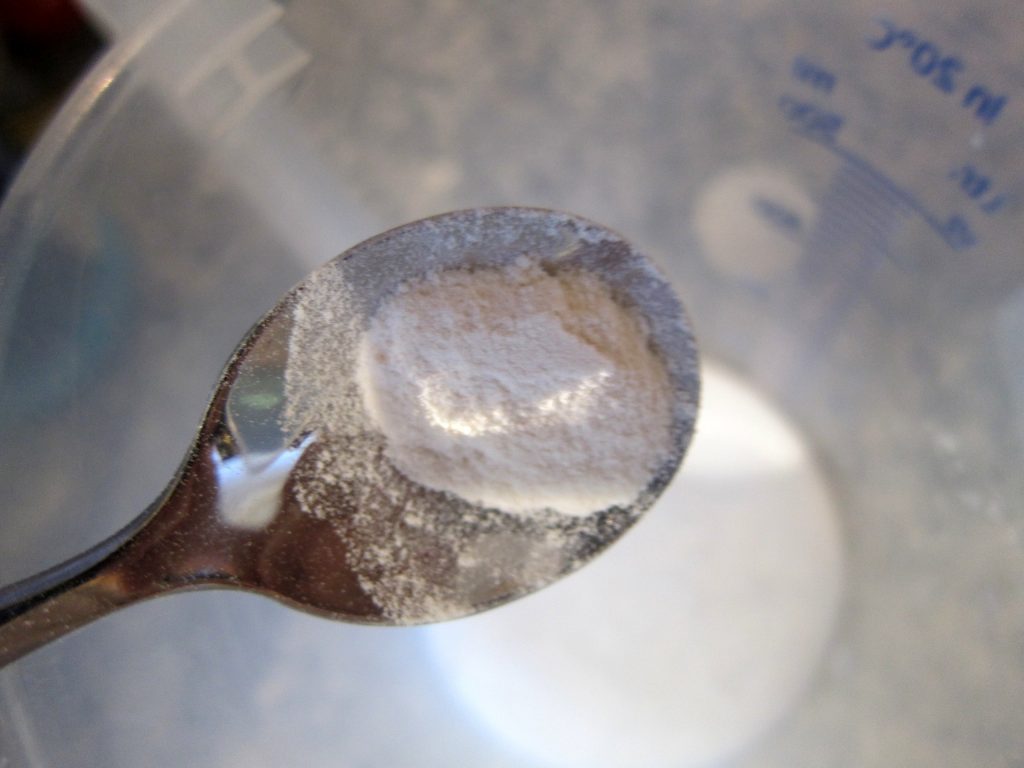
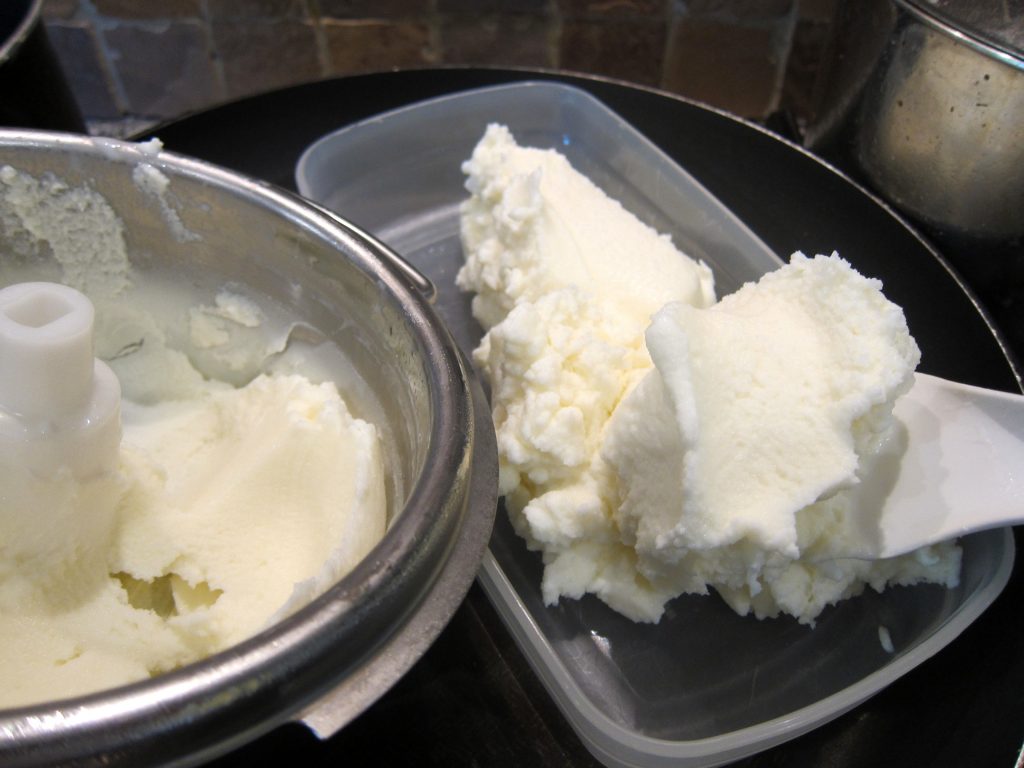
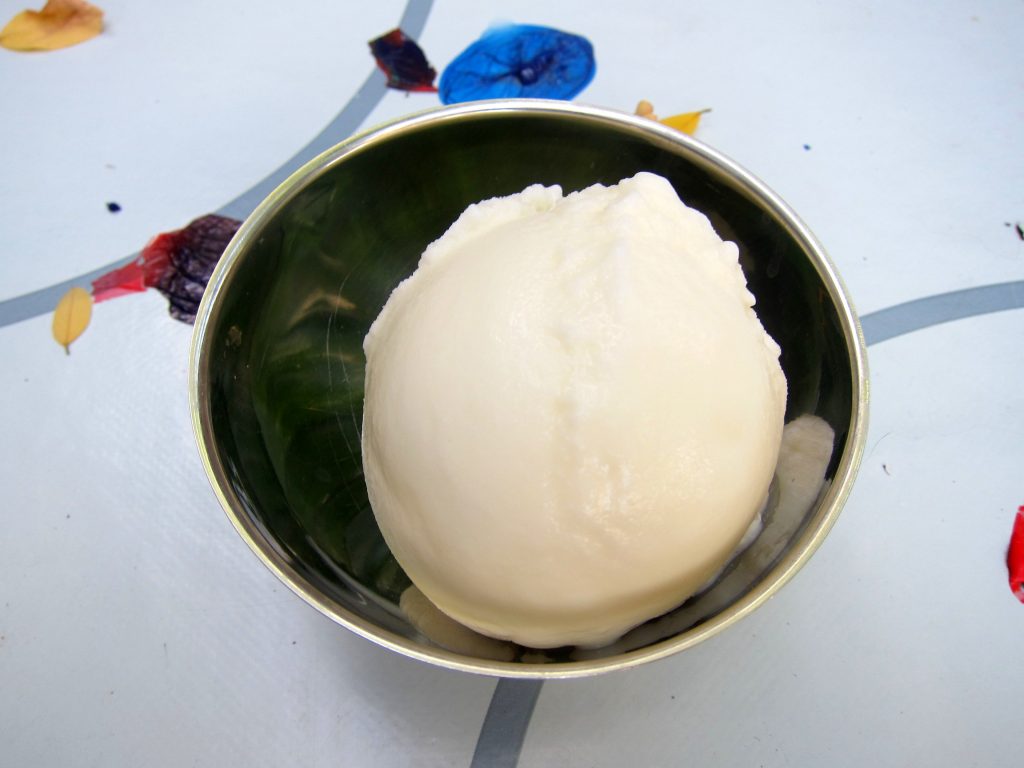
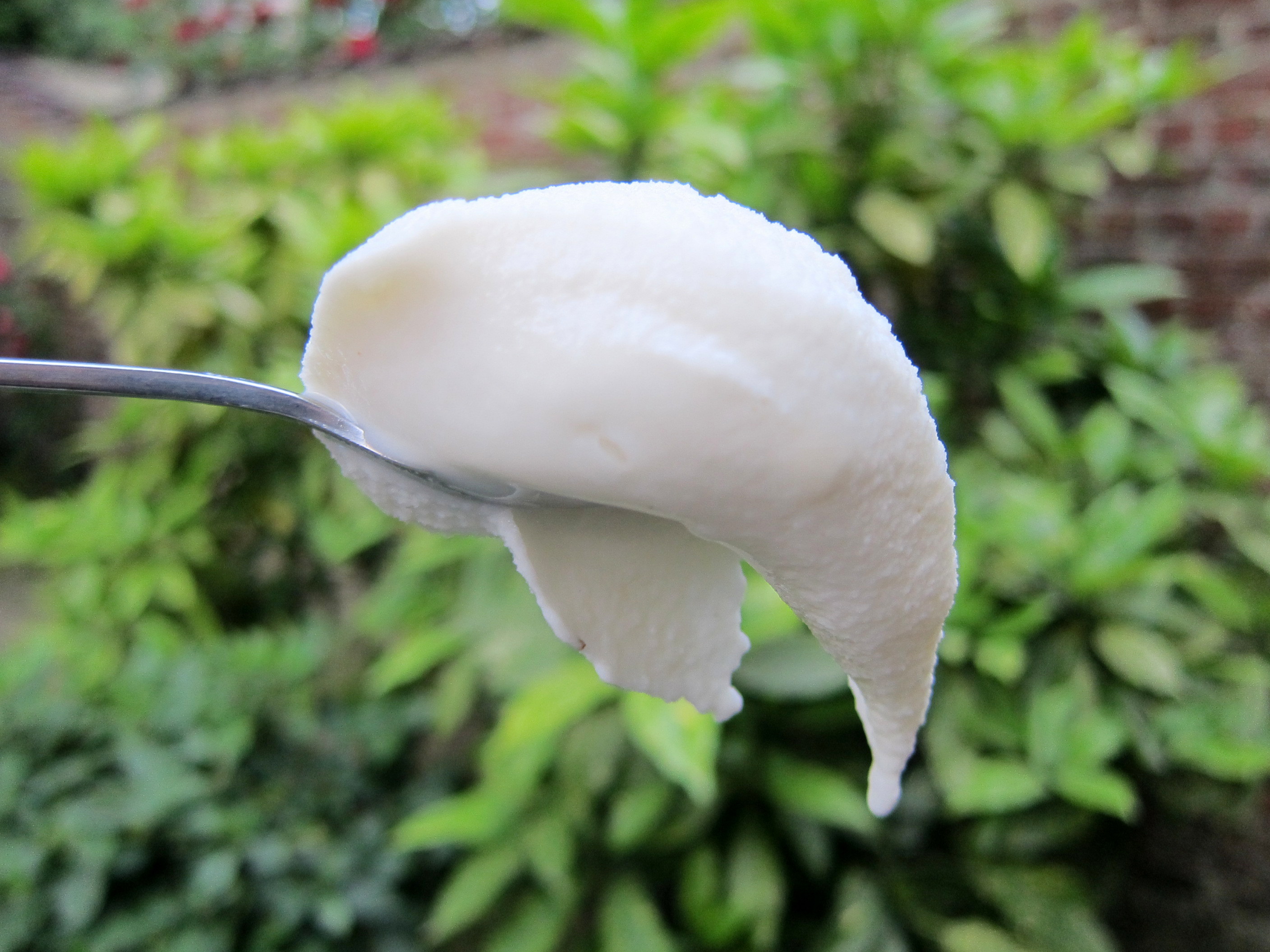
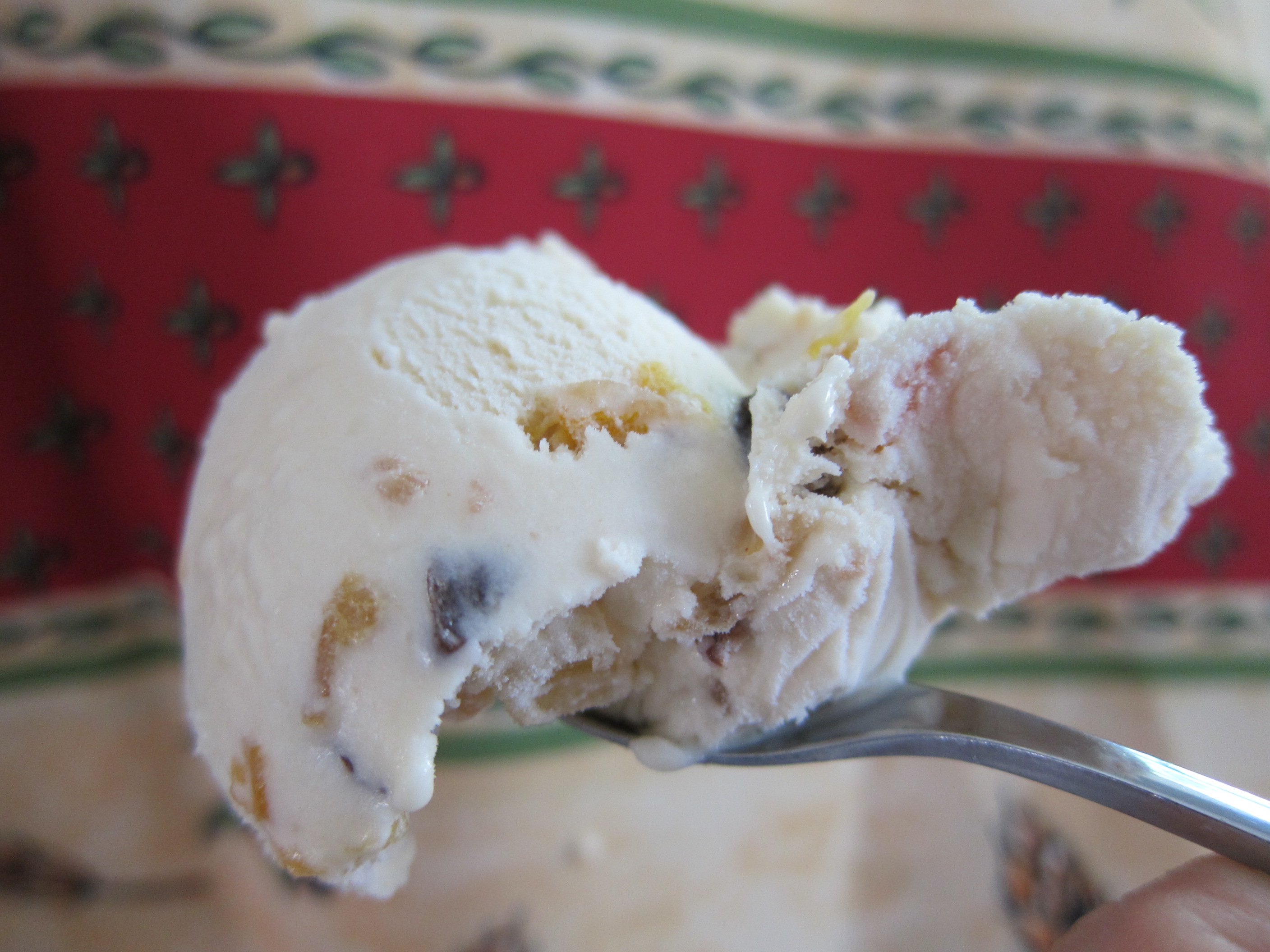
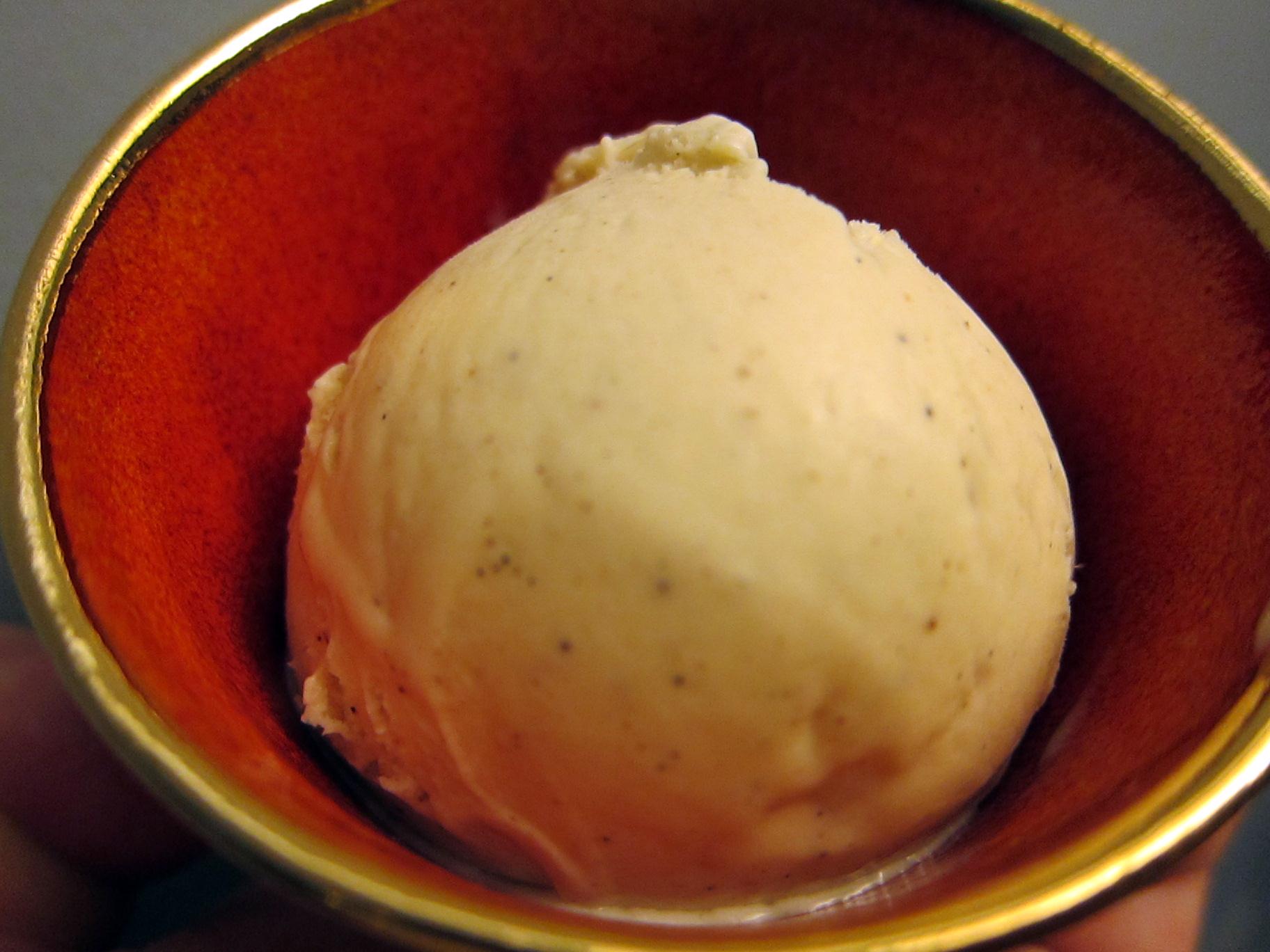


I wanted to add some info for comparison.
This is a gelato. If you are using heavy cream (assuming that’s what you meant by “cream”), it has the following composition:
Water: 71%
Fat: 6.6%
Sucrose (sugar): 15%
Non-fat solids: 11%
Total Solids: 29%
By comparison, many home ice cream recipes use cream and milk in a 2:1 ratio (yikes!). Walt’s Dream (Ample Hills) uses non-fat dry milk to reduce the fat. It has the following composition:
Water: 56%
Fat: 16%
Sucrose (sugar): 14%
Non-fat solids: 11%
Total Solids: 44%
In our ice cream shop, we’ve discovered that aging the mix matters to some recipes more than others.
-Sax
Thank you for a delicious sounding recipe. I live in America. can you advise where I can buy gellan gum affordably?
Hi Stacy,
Gellan is unfortunately one of the most expensive gelling agents out there, but (at least for private use) it is luckily also quite economical (a package will last quite a while). I´m not sure where you could find the best deals but Amazon sells it (just to name one close-to-global seller)- Best of luck!
If you were to use arrowroot or cornstarch instead of the Gellan gum, how much would you need if you keep all other ingredients’ measurements intact?
I am just starting to experiment with no egg gelato a. Do you feel that this base could function as a starter base for all flavors or do you feel that some are truly better with an egg yolk custard base?
Thank you!
Dear Debbie,
Have you checked out the arrowroot base recipe? It uses the same amount of liquid, so if you use about 5 tablespoons of Arrowroot starch you should be fine. If you use, like, corn starch, I would say that you could probably test with 3-4 tablespoons (finally, this depends a lot on personal preferences – check the many comments on the page for Sicilian gelato debating the optimal amount of starch to use 😉 .
As for starter bases, I think that the Fior di Latte-one could work very well as a general base, since it is easy to combine with many different flavours.
Do I think that some ice creams truly works better with egg-yolks? Well, that really depends on one’s personal taste. I’d say that most flavours usually work quite well in both types of recipes, but that those who prefer the particular “eggy” touch provided by … well, eggs, might feel that dimension missing (particularly if brought up” on egg-rich ice cream, making it the personal “standard for good ice cream”). Myself, luckily not constrained by any allergies, shamelessly love most types of ice creams, both those made with eggs and those without 🙂
Hi. This looks very simple and healthier. But I want to use Agar Agar instead of Gellan gum. Could you help me with the measurement?
Hi Maanasa,
You would probably need to use at least about twice as much Agar Agar as Gellan. Good luck!
Great! Can I use xanthan gum instead of gellan gum?
Hi Sumaniaka,
Yes, with some caveats.
Both gums are stabilisers, so in that sense you could replace one with the other as they basically fulfil the same function. However, they also have differences: They may differ in the way they should be added/activated (Xanthan should not need any heating, for example) and with regard to how much you’d need to use (check the manufacturer’s dosage recommendations). Also, and especially if “overdosed”, they may add their respective specific “touch” to the ice cream (Xanthan, for instance, could add an undesired, clingy mouthfeel of “creamy-but-not-from-cream”), so err on the side of caution when it comes to measuring.
Hello Anders. Would gelatine work in this recipe? If so could you please recommend the quantity you think. Sometimes a lean ice cream is just what I want because they feel colder, lovely in very hot weather.
Hello Peggy,
I guess you could try to make a gelatin-version but I’m not sure about the quantities (with so little cream, I would put my guesstimate to at least three-four sheets). If you are looking for lean ice cream, may I recommend some Sicilian gelato? One of my own personal (and lean) favourites is the one using arrowroot 😉
By Ander thanks for the recipe please how do I make ice cream soft without getting hard after some days in the freezer? Wish I can even get a direct contact to communicate with you.
Thanks
Hi Aku,
It is difficult to avoid – “ordinary” freezers are colder than the display-freezers you will find in ice cream shops, and then it also depends on things like how much sugar, cream and air you put in your ice cream.
Some quick ways to make the ice cream freeze less hard is to (1) increase the amount of cream (=fat), or (2) add a little alcohol (will act as a kind of anti-freeze agent), or (3) increase the amount of sugar/replace some of the ordinary caster sugar with so-called inverted sugar (like corn syrup, honey, agave nectar …).
Another way to deal with the freeze-effect is to take out the ice cream from the freezer about 20 minutes or so before you plan on serving it. Or daringly soften your ice cream portion a little in a micro-wave oven before eating it (just be careful not to melt it all: a couple of 10-second rounds can go a long way 🙂
Hi Anders! Interesting that you’ve chosen to add a small amount of gellan – I’ve seen other recipes use more to set the base to a firm gel, then blend to make a fluid gel. Have you tried this way at all?
Hi Tom,
Perhaps that might be an option for those who really want to have a very firm consistency. Personally, I don’t really see the point: to me, it seems better to only add as much as you need to get the desired consistency 🙂
Hi Anders,
I was able to find Gellan Gum at a reasonable cost but there are two types: High ACYL and Low ACYL, which would you recommend?
Hi Kristen,
I’d recommend the low acyl one. Best of luck!
Thank you.